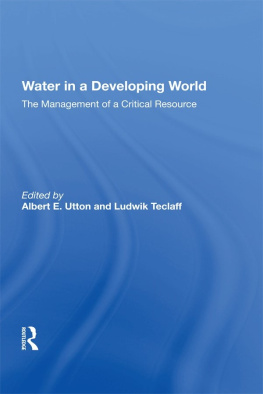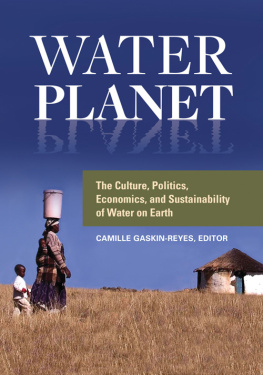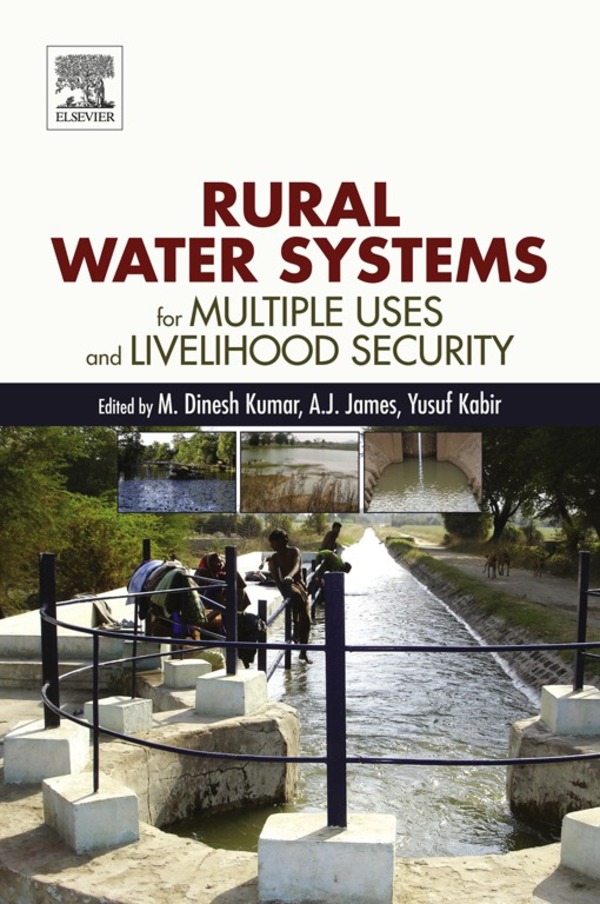Rural Water Systems for Multiple Uses and Livelihood Security
Editors
M. Dinesh Kumar
Institute for Resource Analysis and Policy, Hyderabad, India
A.J. James
Institute of Development Studies, Jaipur, Rajasthan, India
Yusuf Kabir
UNICEF Office for Maharashtra, Mumbai, India
Table of Contents
Copyright
Elsevier
Radarweg 29, PO Box 211, 1000 AE Amsterdam, Netherlands
The Boulevard, Langford Lane, Kidlington, Oxford OX5 1GB, UK
50 Hampshire Street, 5th Floor, Cambridge, MA 02139, USA
Copyright 2016 Elsevier Inc. All rights reserved.
No part of this publication may be reproduced or transmitted in any form or by any means, electronic or mechanical, including photocopying, recording, or any information storage and retrieval system, without permission in writing from the publisher. Details on how to seek permission, further information about the Publishers permissions policies and our arrangements with organizations such as the Copyright Clearance Center and the Copyright Licensing Agency, can be found at our website: www.elsevier.com/permissions.
This book and the individual contributions contained in it are protected under copyright by the Publisher (other than as may be noted herein).
Notices
Knowledge and best practice in this field are constantly changing. As new research and experience broaden our understanding, changes in research methods, professional practices, or medical treatment may become necessary.
Practitioners and researchers must always rely on their own experience and knowledge in evaluating and using any information, methods, compounds, or experiments described herein. In using such information or methods they should be mindful of their own safety and the safety of others, including parties for whom they have a professional responsibility.
To the fullest extent of the law, neither the Publisher nor the authors, contributors, or editors, assume any liability for any injury and/or damage to persons or property as a matter of products liability, negligence or otherwise, or from any use or operation of any methods, products, instructions, or ideas contained in the material herein.
British Library Cataloguing-in-Publication Data
A catalogue record for this book is available from the British Library
Library of Congress Cataloging-in-Publication Data
A catalog record for this book is available from the Library of Congress
ISBN: 978-0-12-804132-1
For information on all Elsevier publications visit our web site at https://www.elsevier.com/

Publisher: Candice Janco
Acquisition Editor: Louisa Hutchins
Editorial Project Manager: Rowena Prasad
Production Project Manager: Mohanapriyan Rajendran
Designer: Mark Rogers
Typeset by TNQ Books and Journals
List of Contributors
S. Bandyopadhyay , Associate Professor, School of Ecology and Environment Studies, Nalanda University, Rajgir, Bihar, India
N. Bassi , Institute for Resource Analysis and Policy, Delhi, India
S. Deshpande , Groundwater Surveys and Development Agency, Pune, Maharashtra, India
J.D. Foster , Chestertown Spy, Chestertown, MD, United States
S. Jagadeesan , Former Managing Director, Sardar Sarovar Narmada Nigam Ltd, Gandhinagar, Gujarat, India
A.J. James , Institute of Development Studies, Jaipur, Rajasthan, India
Y. Kabir , UNICEF Office for Maharashtra, Mumbai, India
D.S. Kumar , Tamil Nadu Agricultural University, Coimbatore, India
M.D. Kumar , Institute for Resource Analysis and Policy, Hyderabad, India
V. Niranjan , Engineering & Research International LLC, Abu Dhabi, United Arab Emirates
R.M. Saleth , Madras School of Economics, Chennai, India
M.V.K. Sivamohan , Institute for Resource Analysis and Policy, Hyderabad, India
N. Vedantam , Engineering & Research International LLC, Abu Dhabi, United Arab Emirates
Preface
The idea of a book on rural water systems for multiple uses came towards the end of 2012 when Institute for Resource Analysis and Policy (IRAP)-Hyderabad, UNICEF-Mumbai, and the Groundwater Survey and Development Agency (GSDA)-Pune, Maharashtra, completed a collaborative action research project titled Multiple Use Water Services to Reduce Poverty and Vulnerability Climate Variability and Change. Several subsequent studies reinforced the finding, which emerged from the Maharashtra study, that many rural water systemseither those meant for irrigation or domestic water supplyserve multiple purposes, depending on the socioeconomic characteristics of the population in the area in which those systems are embedded or its physical environment, defined by hydrology, geo-hydrology, and climatewhich is a function of the year and the season. They also showed that the uses of a rural water system can change from year to year, depending on whether it was wet or dry. It can change from the rainy season to summer.
The question was about evolving appropriate technical and socioeconomic considerations for planning and design in order to build resilient multiple-use rural water systems, and crafting institutions and framing policies for their management to meet the domestic and productive water needs, in terms of quantity, quality, and reliability. This required empirical analysis of the performance of different types of multiple-use rural water systems, which are either designed as multiple-use systems or are by default functioning as multiple-use systems, in different physical and socioeconomic settings.
Most of the earlier work on multiple-use water services essentially comprised of theoretical and descriptive work, and lacked empirical analysis of their performance. This book collates experience from different parts of India, representing different agro-ecological and socioeconomic situations, with multiple-use rural water services from different types of socio-technical systems, rural drinking water schemessingle-village and multiple-village schemes, large multipurpose water systems, irrigation tanksto identify the conditions under which their sustainability is threatened vis--vis their ability to meet the domestic and productive water needs of the rural people, which in turn helped us identify the factors that are critical to designing resilient rural water systems. Subsequently, the critical inputs for planning and management of rural water systems for multiple uses, and the institutional and policy regimes that enable enhanced performance are identified.
This volume has compiled, edited and synthesized the works of several scholars from across India, representing several unique physical and socioeconomic environments, which are the outcome of several years of thinking or empirical research or practical experience, on improving the performance of rural water systems in order for them to cater to the multiple needs of the people for survival and livelihoods. We are extremely thankful to the contributors for their invaluable works, their timely submissions of manuscripts, and the patience they have shown in responding to the editorial queries.








